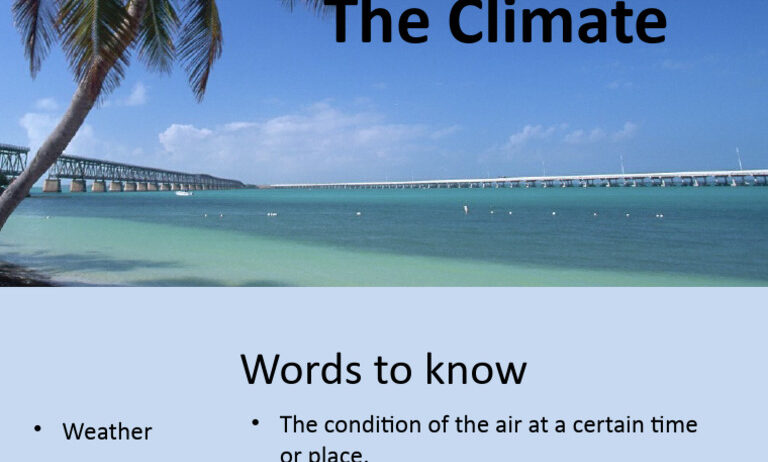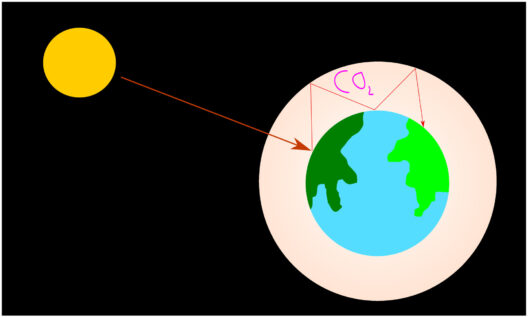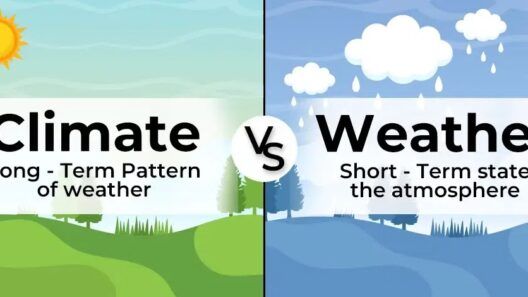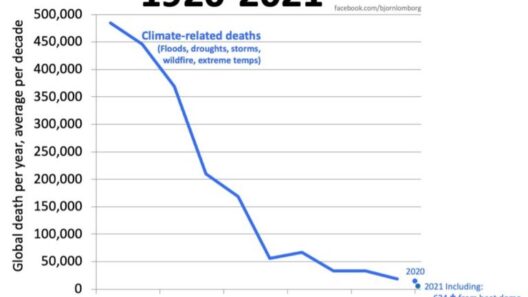Florida, often dubbed the “Sunshine State,” presents a captivating tapestry woven from its rich geography and evolving weather trends. To the untrained eye, this state embodies the essence of a tropical paradise, yet a deeper examination reveals a complex relationship between its geography and climate. Fluctuating weather patterns, sea-level rise, and the aftermath of unprecedented storms challenge the conventional notion of Florida as a strictly tropical climate.
Geographically, Florida rests like a green jewel in the southeastern crown of the United States. The state is bounded by the Atlantic Ocean to the east and the Gulf of Mexico to the west, extending into a vast array of ecosystems ranging from wetlands to subtropical forests. On a map, Florida exhibits a unique peninsula shape, which creates a microcosm of climatic zones that contribute to its distinctive weather patterns. But what truly defines Florida: its geography or its personality? Is it the lush greenery or the humidity-laden air that captivates the imagination?
To classify Florida as a tropical climate, one must consider the Köppen climate classification system, which divides the world into distinct climatic types based on temperature and precipitation. Florida largely falls within the humid subtropical zone, characteristic of mild winters and hot, humid summers. The southern region, including cities like Miami and Key West, dips into a tropical savanna climate wherein the summers are hot and wet, while winters boast dry spells. Thus, the question arises: can we label Florida as truly tropical based on the climatic features present in its southern regions?
As residents and visitors alike embrace the sun-drenched allure of Florida, it is crucial to acknowledge the discrepancies that mar the image of a uniform tropical climate. For instance, the northern part of the state experiences distinct seasons influenced by cooler air masses sweeping down from the north, leading to a fluctuating climate that can be described as neither fully tropical nor consistently subtropical. Here, the climate exhibits a seasonal rhythm, reminiscent of a symphony where the orchestra occasionally hits dissonant notes—an unexpected chill during winter, perhaps, a surprise for the unknowing traveler.
Transitioning through Florida’s diverse landscapes, one sees an intricate dance of ecosystems that thrive under varying climatic conditions. The Everglades, a UNESCO World Heritage site, showcases the delicate balance between freshwater and saltwater, with its rich biodiversity resulting from the unique climatic interplay. This region can be seen as a living testament to nature’s adaptability, mimicking the varied weather patterns that define Florida’s identity. However, as climate change accelerates, the once predictable weather shifts like sand beneath our feet, transforming landscapes and endangering the very ecosystems that thrive within this spectacular setting.
One cannot ignore the ominous specter of climate change looming over Florida. Rising sea levels threaten to encroach upon and redefine the coastlines, much like a relentless tide eroding sandcastles built at the water’s edge. As the seas rise, so do temperatures, intensifying the storms and hurricanes that frequent the state. The 2017 Hurricane Irma serves as a harrowing reminder of the destructive potential of tropical storms, leaving many to ponder whether Florida’s tropical tendencies are a harbinger of escalating calamities rather than a sign of idyllic paradise.
The interplay between geography and weather trends in Florida leads to a broader question: how should we prepare for a future replete with environmental uncertainty? As warm winds become more turbulent and precipitation patterns unpredictably shift, embracing adaptation strategies emerges as a necessity. Flood-resistant infrastructure, wetland restoration, and extensive conservation measures can act as bulwarks against the encroaching tides of adversity. In this respect, Florida stands not only as a poster child for tropical allure but also as a resilient protagonist in the ongoing narrative of climate disparity.
Moreover, the cultural landscape of Florida reflects this dichotomy between its geographical beauty and weather realities. The tourism industry flourishes, drawing visitors who come to bask in the warmth and sunlight. Yet, beneath the surface, there lies a pressing urgency for awareness and action regarding climate change. Efforts to promote sustainable tourism, conservation, and responsible stewardship highlight the necessity of reconciling enjoyment of this tropical paradise with a commitment to its preservation.
In conclusion, Florida presents an enthralling study of contradictions and complexities at the intersection of geography and weather trends. The state’s tropical allure is undeniable, yet it is tempered by the reality of significant climatic challenges. Perhaps Florida’s most unique appeal lies within its multifaceted identity—the tropical paradise that must navigate the tides of change. As the proverbial sun rises and sets over this gleaming peninsula, its future rests in the collective hands of those who recognize the importance of safeguarding its delicate ecosystems while cherishing the vibrant life they harbor. In the embrace of Florida’s splendor, may we cultivate awareness and action, nurturing the potential for a harmonious balance between nature and humanity.








